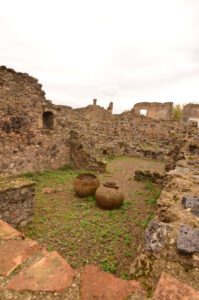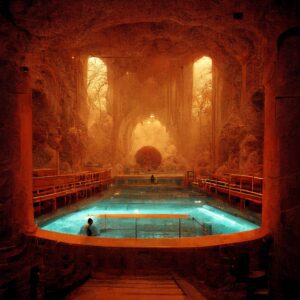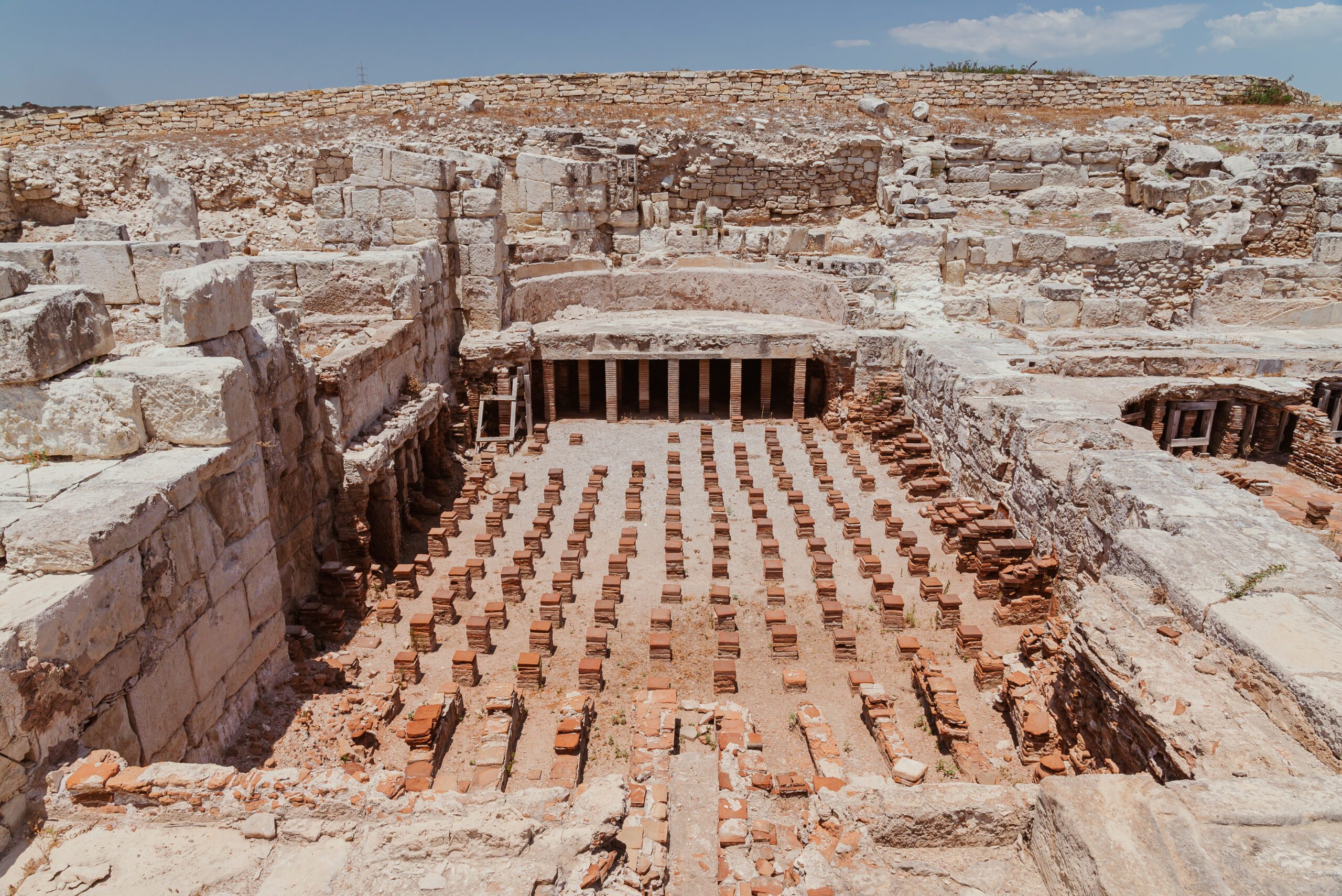Imagine stepping back in time to the Indus Valley Civilization, around 2600 BCE. As you wander through the ancient city of Mohenjo-Daro, located in what is now Pakistan, you come across a colossal structure that leaves you in awe. This monumental edifice, known as the Great Bath, is a testament to the advanced engineering and urban planning of its time.

- An Ancient Marvel: The Great Bath of Mohenjo-Daro stands as one of the most remarkable archaeological discoveries from the Bronze Age. It represents the earliest known public water tank or bath, exhibiting the sophistication of the Indus Valley civilization.
- Dimensions and Design: This architectural marvel measures approximately 39 feet (12 meters) in length, 23 feet (7 meters) in width, and over 8 feet (2.4 meters) in depth. The bath is constructed from well-baked bricks and features a stepped entrance on its northern side.
- Municipal Swimming Pool: In modern terms, the Great Bath can be likened to a municipal swimming pool. It was not merely a bathing facility; it served as a center for ritualistic and communal activities.
- Steps to Serenity: The Great Bath’s most distinctive feature is its wide, shallow steps that descend into the pool. These steps allowed easy access to the water and provided a seating area for those wishing to immerse themselves in conversation or contemplation.
- Engineering Excellence: The bath’s construction showcases the engineering prowess of the Indus Valley people. Its walls are watertight, preventing any leakage, and it is equipped with a sophisticated drainage system to manage water levels.
- Water Supply: To fill this grand pool, a complex network of water channels and drains was employed. Water was likely supplied from a nearby well, demonstrating the city’s advanced hydraulic engineering.
- Ritual and Symbolism: The Great Bath’s primary function was ceremonial and symbolic. It is believed to have played a central role in the religious and social life of the city, serving as a place for ritualistic purification and communal gatherings.
- Cultural Significance: The concept of communal bathing held cultural importance in the Indus Valley civilization. Bathing was not only a physical cleansing but also a spiritual one, reflecting the society’s reverence for cleanliness and purity.
- Urban Planning: The presence of such an impressive public bathhouse hints at the meticulous urban planning and centralized authority in Mohenjo-Daro. It suggests a highly organized and structured society.
- Legacy: The Great Bath of Mohenjo-Daro continues to captivate archaeologists, historians, and visitors alike. Its existence challenges preconceived notions about ancient civilizations and their architectural achievements.


In conclusion, the Great Bath of Mohenjo-Daro stands as a testament to the sophistication and ingenuity of the Indus Valley civilization. It is a reminder that even in the distant past, humans were capable of engineering marvels that continue to inspire wonder and admiration today. As we marvel at this ancient public bath, we glimpse into a world where communal rituals and urban planning went hand in hand, shaping the course of history.






